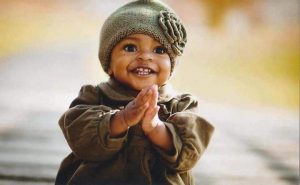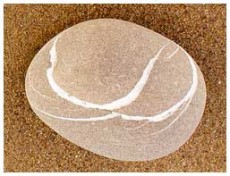
On a sunrise walk in Florida, I stroll along a dirt path beside a lake between two golf courses. The sky radiates layers of pink, stripes of purple before the orb glows orange and gold, then rises huge and round above the horizon. I feel held by the cloudless pastel expanse above. Chatty chorusing birds squawk, echoes of their calls bouncing off the mirror-like water. I bow to the scurrying squirrels, as they chase each other and me. I sing a song that Cat Stevens popularized:
Morning has broken like the first morning
Blackbird has spoken like the first bird
Praise for the singing, praise for the morning
Praise for them springing fresh from the world
Soon an errant golf ball whooshes past my right ear. I hear a firm plop beside me and look down to see the little white ball plunk in the grass near my feet. My path is parallel to two roads, a median strip between them and a rolling hill, all between me and the closest fairway. Two men in a clunky golf cart rattle toward me, hop out of the cart six feet away from me, spot the ball, pick it up, then wave to me and smile. I smile, wave and nod to them as they toddle back to their game.
Next, I hear a hard-to-miss deep drumming, chipping sound. I follow it to the tree where it originates and see the majesty of a red-crested Pileated woodpecker. He jabs and jabs with his bill into a horizontal branch, perched there majestically. Tap, tap, tap. He does not stop when I approach him, does not fly off when squirrels dance around him up down the tree. And I think, “what an honor to witness such beauty.”
I realize, in my first hour after awakening, I have praised, bowed, sung, waved, smiled, honored and nodded. I am reminded, then, that on other days at dawn, at the end of an early morning yoga practice, we touch palms together, each at our own sternum. Used in a secular way, we bow first to our own Self (capital S), then lift our gaze to meet the eyes of others in the class. To honor us all, we bow and say to each other, “Namaste.”
“Namaste” means many things: “The highest and best in me recognizes the highest and best in you.” Or “All that is good in me honors the light, love, beauty, and peace in you. In sharing these things, we are united.”
And then it came to me. What if– while we can’t touch each other, and in addition to elbow bumps, air high fives, short waves, and little kicks—what if we Namaste? On the Indian subcontinent, Namaste is the greeting on streets, on Himalayan paths, while crossing narrow footbridges. The power of Namaste is longer than a hug and reaches beyond a handshake, beyond hello and good-bye. Hands in prayer position over our hearts, namaste tells the truth of our common humanity. And since pandemics are also part of our shared humanity, with a courteous Namaste, we might respect, “we are equals. We are in this together.”
Namaste is not superficial, not glib. The smile in Namaste is essential. The bow in Namaste is a blessing. Eye contact expresses, “I see you.” The sounds in the word Namaste are soft, sibilant, sweet. And the quality of kindness that radiates through the fingers from the heart is warm. That’s human contact we need always and maybe especially during cold, flu and virus season.
Namaste.



Susan…Beautiful words…George and I are traveling home to Maine from Sarasota…will stay on the car at night. Stay safe…Namaste…Bobbie Gordon
This needs to go viral! So much more meaningful than an elbow bump.